Photo

at Lija, Malta https://www.instagram.com/p/CqUhDg_IQDJ/?igshid=NGJjMDIxMWI=
2 notes
·
View notes
Photo
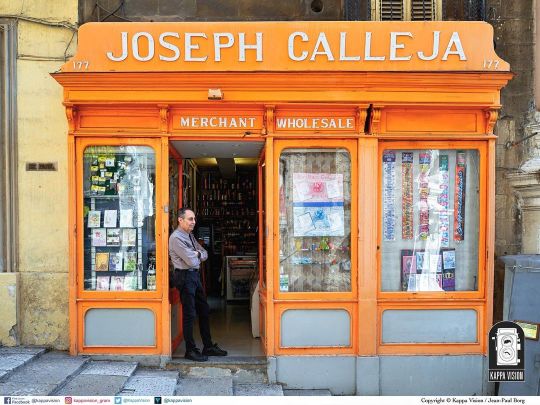
The iconic orange coloured vintage wooden shopfront of a family run wholesale merchant in #Valletta, #Malta. The shop at 77, St. Lucia Street sells wholesale religious items, statues and miniatures, ribbons, cards, party, wedding and seasonal (Christmas) items. The owner’s grandfather started the business a long time ago, with the shop originally being named Azzopardi after his surname. Joseph Calleja took over, renaming the shop which his son inherited and now in turn runs with his son. The shop is open Monday to Saturday between 9:00am and 12:30pm. (at Valletta, Malta) https://www.instagram.com/p/CqR_k9Ao2jN/?igshid=NGJjMDIxMWI=
0 notes
Photo

at Valletta, Malta https://www.instagram.com/p/CqPWQjzIUSf/?igshid=NGJjMDIxMWI=
0 notes
Photo

The Malta Railway was the only railway line ever on the island of #Malta. It consisted of a single railway line from Valletta to a valley between Mdina and Mtarfa, in Rabat. THE MALTA RAILWAY - IL-VAPUR TA’ L-ART From 1883, Malta’s railway service started operating its single-track line in metre gauge. The train passed by several localities and was not only intended for civil purposes, but also for military ones, as in Mtarfa there were various British military installations. The Malta Railway was known in Maltese as “il-vapur ta’ l-art” (the land ship). It operated for 48 years from 1883 to 1931. The trip from Valletta to Mdina took approximately 35 minutes. The railway passenger train made its last journey on the 31st of March 1931. ONE LINE, 11KM LONG AND THE ONLY EVER IN MALTA Inaugurated on the 28th of February 1883, the Malta Railway covered a total of 11 kilometres with stations at Valletta, Floriana, Ħamrun, Birkirkara and Attard apart from the one at Rabat. Joseph Grima also notes that J. Pearson & Sons Ltd brought three standard-gauge locomotives to Malta during the construction of the Grand Harbour breakwater in 1904. The Malta Railway Company was established in 1880 and opened a railway line that ran from Valletta to Vittoriosa (Birgu), via Zabbar, Żejtun and Cospicua. The line was extended to Marsa in 1883 and was a standard-gauge railway. The Royal Navy also had an internal standard-gauge railway in the dockyard. THE CARRIAGES The carriages of the trains were made of wood on iron frames. The seats were parallel to the line on both sides of an aisle. Originally illuminated by candles, this was changed to electricity, powered by batteries, in 1900. THE FLORIANA STATION The railway line to Mdina commenced in Valletta, running from the erstwhile Yellow Garage beneath Valletta’s City Gate and up to the Pinetum, passing underneath the fortifications through a tunnel almost one kilometre long and emerging at open ground near Portes des Bombes below St. Philip’s Bastion (see photo ). This section was converted to the Malta Telephone Exchange after the railway line was closed, but has long been disused itself. Continues in comments (at Floriana, Malta) https://www.instagram.com/p/CqOMy7WIZkH/?igshid=NGJjMDIxMWI=
0 notes
Photo
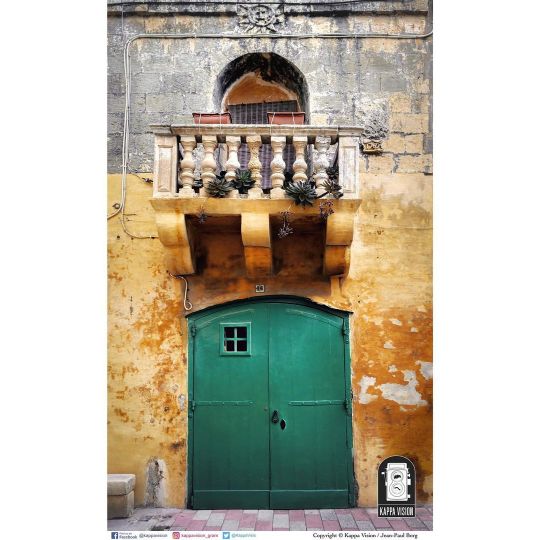
In Qrendi, every stone has a story to tell. The small village of Qrendi in south-western #Malta is packed to the brim with heritage. Some of its architectural heritage is less visible and requires an attentive eye, like this old building in St. Catherine Street. At first glance it might seem like a vibrantly coloured, albeit modest, dwelling with a garage door. In reality the building, with its large stone corbeled balcony prominent on its façade, is very old, dating to medieval times. But there are other more important stone features of heritage value that we’ll shed some light upon. IS THAT THE SUN UP THERE? That is what one might very well wonder. In reality, what may look like a simple sun sculpture is in fact an I.H.S. religious icon that symbolizes the son of God. A contraction is also derived from the Greek word ΙΗΣΟΥΣ, meaning Jesus, used as a symbol or monogram. This was later misunderstood as a Latin abbreviation I.H.S. and expanded variously as ‘Iesus Hominum Salvator’, meaning ‘Jesus, Savior of Men’; In Hoc Signo (Vinces), in this sign (thou shalt conquer); In Hac (Cruce) Salus, in this (cross) salvation. A DEFACED COAT OF ARMS Next to the balcony (on the right side of the photo) is a defaced coat of arms bearing the date 1769, presumably defaced during the French invasion of the Maltese islands of 1798 to 1800. A connection to this coat of arms might exist with the similar coat of arms present within the chapel of St. Catherine known as Santa Katerina tat-Torba located close by, along the same street. Did you ever notice this building? Are you one of those people who like walking the streets of Malta and Gozo looking up and around for these hidden features? (at Qrendi) https://www.instagram.com/p/CqMzhPzI7r1/?igshid=NGJjMDIxMWI=
0 notes
Photo

An alien building in Malta’s prime entertainment area. The spectacular Art Nouveau Villa Rosa in St. Julian’s is a prominent landmark overlooking a highly frequented bay on the coast of Paceville, the party Mekka par excellence of #Malta. Although encircled within an enormous garden and swimming pool, development around Villa Rosa today contrasts greatly with the rest of the landscape. But if you thought that what we see around is outrageous (photo 2), it will pale in comparison to the landscape we will see around it (photo 3) soon once two ‘iconic’ towers of 27 and 34 storeys will rise above it. The two mega high rise towers over St. George’s Bay will host 789 serviced apartments, 247 hotel rooms and a total 16,000 square metres of office space in a project from developer Anton Camilleri and his son Adelbert that will change this part of St. Julian’s forever. Local plan rules limited heights to seven floors in the area near Bay Street, but this 34-storey development has now been given the green light. A TINY DOT IN A COMPLETELY DIFFERENT ST. GEORGE BAY That’s right. Villa Rosa will merely be a tiny building hardly visible in the new St. George’s Bay landscape. A €305m high-rise will have 789 serviced apartments to house 24,000 'tourists'. Anton Camilleri will self-finance the Villa Rosa development at St. George’s Bay that will generate 2,214 cars a day but offer 11,000 square metres of open space - James Debono, Malta Today, 13 March 2023. What’s your take on this latest mega development for this area of Malta? HISTORY OF VILLA ROSA IN ST. JULIAN'S Villa Rosa was built in the 1920s by the Maltese architect Andrea Vassallo - the same man who designed the impressive neo-Romanesque basilica church of Our Lady of Ta’ Pinu in Gozo. A BRILLIANT, SELF-MADE ARCHITECT Vassallo designed or was involved in the construction of many buildings and structures across the Maltese islands, including hospitals, schools, workshops and houses. He used various architectural styles throughout his career. Continued below (at St George's Bay, Malta) https://www.instagram.com/p/CqK7MWnIAt2/?igshid=NGJjMDIxMWI=
0 notes
Photo

VICTORIA GATE VALLETTA This gate is the main entrance to #Malta’s capital city from the Grand Harbour area - and the only surviving gate within the fortifications of #Valletta. The gate is located between Marina Curtain and St. Barbara Bastion, on the site of the 16th century Del Monte Gate in Liesse Hill. This area was once the busiest part of Valletta. The Victoria Gate present today looks very different from its predecessor and was designed by the renowned Maltese architect Emanuele Luigi Galizia in 1884 and unveiled a year later, named after Queen Victoria. THE ONLY REMAINING GATE IN VALLETTA Today, the only other gate in Valletta is the City Gate, which was built in 2014 to a modern design. All the other fortified gates were demolished between the 19th and 20th centuries. HISTORY OF THIS GATE - FROM DEL MONTE GATE TO VICTORIA GATE When Valletta was founded in 1566, a system of bastioned fortifications was built around the city, to a design by the Italian military engineer Francesco Laparelli. The city only had three gates, the main one being known as Porta San Giorgio, and two smaller gates on either side of the city which were known as the Marsamxett Gate and Del Monte Gate. Del Monte Gate (Italian: Porta Del Monte) was built in 1569 to a design by Laparelli, and it was named after Grand Master Pierre de Monte. It later also used to be known as Ponte della Marina (Marina Gate). This gate was located between Marina Curtain and St. Barbara Bastion on the eastern side of the city, facing the Grand Harbour. The area around it became a small marina, and the gate was also called the Marina Gate (Italian: Porta Marina) since it provided access to the city from the marina. The area around the gate bustled with activity, and it included a garden known as Ġnien is-Sultan, the Church of Our Lady of Liesse and the Fish Market. By the late 19th century, the Del Monte Gate became too small since the area around it was the busiest part of Valletta. It was demolished in 1884, and it was replaced with the larger Victoria Gate. The first stone of the new gate was laid down in 1884 by Governor Arthur Borton, and it was completed and opened to the public in 1885. (at Valletta, Malta) https://www.instagram.com/p/CqIuLevIX0U/?igshid=NGJjMDIxMWI=
0 notes
Photo

Another one of #Valletta's vintage shop signs lost forever. And to think that the Planning Authority worked to have these vintage shop frontages protected with Grade 2 status…. THE OWL STATIONERY This is how the vintage shopfront of the old Owl Stationery in Archbishop Street looked liked for many years up until being recently damaged beyond repair by wreckless construction workers. Another one of Valletta's typography gems, made by sign maker C. Grech from Ħamrun, gone forever. Do you remember it? SHOPFRONTS IN VALLETTA Another aspect of #Malta’s capital city’s architectural history are wooden shopfronts and vintage signs with beautiful typography. On the streets of Valletta the old wooden frontages, kiosks and painted signs can be traced back to the later part of the 19th century and early 20th century. Their signs reveal what the owner’s occupations were, the services they offered and what they sold. Bars, pastizzerias and stationers are just a few of the types of stores that flourished here. Some are still operating under different shops name but most remain closed and out of use. GRADE 2 PROTECTED The Malta Environment and Planning Authority (MEPA) scheduled 62 wooden shopfronts, kiosks and painted signs, bringing the total of those under protection to 112. They have been accorded Grade 2 protection status, which is given to buildings of architectural or historical interest, or which contribute to the visual image of an urban conservation area. The criteria are historic significance, aesthetic/architectural, social and research values, rarity, contextual/interpretive aspect and what they represent. Among the features preserved are the wooden frames and panels, the old glass signs and wooden shutters, which were once a common sight. Owners also have to adhere to a strict colour scheme enforced by Mepa, which is intended to complement other buildings in the city rather than disrupt them. References: - “Saving what’s left of Valletta’s old shopfronts”, David Schembri, Times Of Malta, 15 September 2011; - Tony Blood, “Shop fronts, Valletta, Malta”, 25 August 2014. (at Valletta, Malta) https://www.instagram.com/p/CqGMHalIyoT/?igshid=NGJjMDIxMWI=
0 notes
Photo

While the news of the sequel to Gladiator is doing the rounds in the media, this is what is going on (and up) a short distance away from where the George Russell Gladiator 2 film set is taking shape. A skyline that’s not quite on theme, don’t you think? (at Grand Harbour Port of Valletta Il-Port Il-Kbir) https://www.instagram.com/p/CqE-wPmoCM-/?igshid=NGJjMDIxMWI=
0 notes
Photo
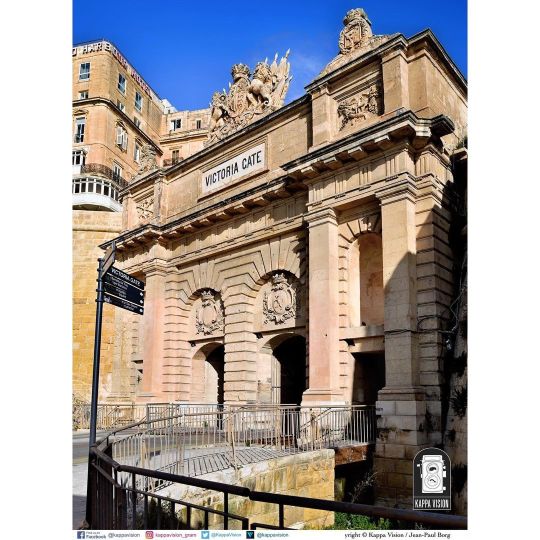
This gate is the main entrance to #Malta’s capital city from the Grand Harbour area - and the only surviving gate within the fortifications of #Valletta. The gate is located between Marina Curtain and St. Barbara Bastion, on the site of the 16th century Del Monte Gate in Liesse Hill. This area was once the busiest part of Valletta. The Victoria Gate present today was designed by the renowned Maltese architect Emanuele Luigi Galizia in 1884 and unveiled a year later, named after Queen Victoria. THE ONLY REMAINING GATE IN VALLETTA Today, the only other gate in Valletta is the City Gate, which was built in 2014 to a modern design. All the other fortified gates were demolished between the 19th and 20th centuries. HISTORY OF THIS GATE - FROM DEL MONTE GATE TO VICTORIA GATE When Valletta was founded in 1566, a system of bastioned fortifications was built around the city, to a design by the Italian military engineer Francesco Laparelli. The city only had three gates, the main one being known as Porta San Giorgio, and two smaller gates on either side of the city which were known as the Marsamxett Gate and Del Monte Gate. Del Monte Gate (Italian: Porta Del Monte) was built in 1569 to a design by Laparelli, and it was named after Grand Master Pierre de Monte. It later also used to be known as Ponte della Marina (Marina Gate). This gate was located between Marina Curtain and St. Barbara Bastion on the eastern side of the city, facing the Grand Harbour. The area around it became a small marina, and the gate was also called the Marina Gate (Italian: Porta Marina) since it provided access to the city from the marina. The area around the gate bustled with activity, and it included a garden known as Ġnien is-Sultan, the Church of Our Lady of Liesse and the Fish Market. (at Valletta, Malta) https://www.instagram.com/p/CqCXQf6Ih81/?igshid=NGJjMDIxMWI=
0 notes
Photo
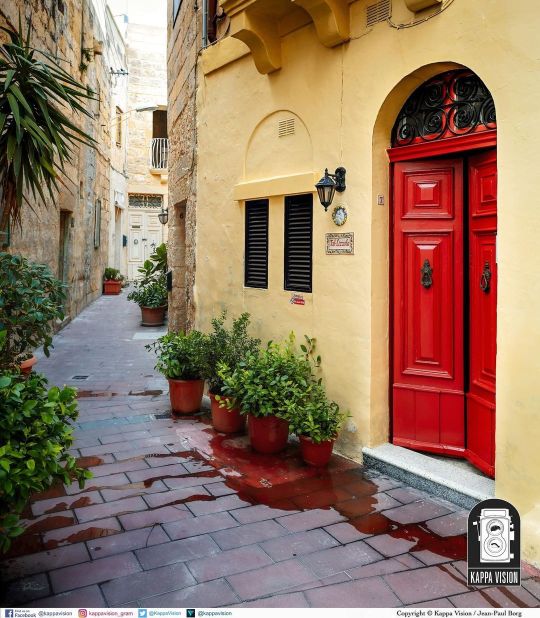
A postcard of authentic Malta charm. May the vibrant colours of this quaint little Rabat alley brighten up your day. Good morning! (at Rabat, Malta) https://www.instagram.com/p/Cp_1ofLofxH/?igshid=NGJjMDIxMWI=
0 notes
Photo
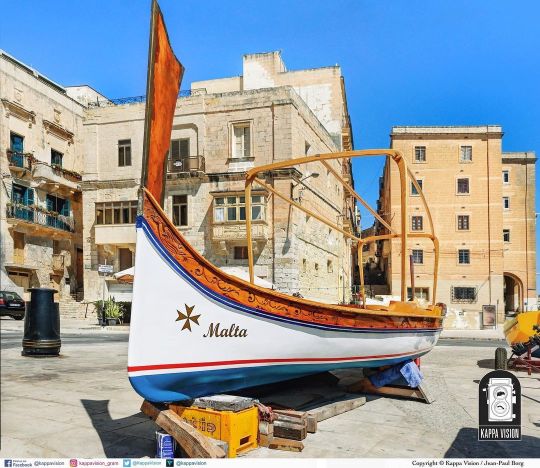
Have you been to the Senglea waterfront? ALL ROADS LEAD TO… Several streets in Senglea have steps which lead down to its most stunning area... the waterfront and the marina. For a moment you may think of Venice, until the sight of the typical Maltese boats brings you back home. These freshly restored and hand-painted Maltese wooden boats add a splash of colour and tradition to arguably one of the most under-rated seaside promenades in #Malta. The Senglea waterfront is a feast of colour, fresh air and good vibes! End the evening with a tasty dinner al fresco at one of the simple kiosks or restaurants on the picturesque waterfront to truly enjoy the beauty of Vittoriosa’s Fort St. Angelo and #Valletta's fortifications lit up in a charming orange hue. The abundant presence of the locals add to the ethnic Maltese flavour, with their down-to-earth, frank and friendly mannerisms. This setting makes it hard to imagine that the whole of Senglea had been bombed to smitherines during the Second World War and had to be almost completely rebuilt. The reason for this harsh bombardment lay in the fact that the wharves beneath the bastions of Isla had been converted into a naval dockyard by the British, who enlarged and developed the shipyard that was originally started by the Knights of the Order of St. John. The Malta Shipyard in Senglea has for long held a name in the entire Mediterranean region and commands the importance of the Grand Harbour of Malta. Even during the Great Siege of 1565, Senglea's role in the defence against Turkish attacks was formidable. In fact Senglea gets its name from Grand Master Fra Claude de La Sengle who, in 1553, completed the fortifications started by Grand Master Fra Juan D'Homedes who had also erected Fort Saint Michael. Isla, on the other hand, is thought to be a derivative from Isola, meaning island, although in actual fact the city lies on a peninsula. References: - My Guide Malta, “Isla - Senglea - Malta”, myguidemalta .com. (at Senglea, Malta) https://www.instagram.com/p/Cp9Pfd1I4c7/?igshid=NGJjMDIxMWI=
0 notes
Photo

at Senglea, Malta https://www.instagram.com/p/Cp8Ovp4obUG/?igshid=NGJjMDIxMWI=
0 notes
Photo

The main entrance of Fort Manoel and the chapel incorporated within it. FORT MANOEL ON MANOEL ISLAND The fort dominates Manoel Island in Gżira, a town in the central-eastern region of #Malta. Designed in the 18th century, the fort’s Baroque gateway faces #Valletta. The fort has a history of serving as a military base that was used to protect Malta's coastline right up to the day Malta achieved its Independence from British rule in 1964. WHAT’S IN A NAME? It was when Grand Master António Manoel de Vilhena decided to construct a fort there and pay for it himself that the island, up until then known as the Bishop’s Isolotto, became known as Manoel Island. Shaped like a star, this fort has a chapel dedicated to St. Anthony of Padua which suffered a direct hit during an air attack in March 1942. MANOEL ISLAND IN DETAIL Manoel Island was named after the Grand Master Manoel de Vilhena who erected the 18th century fort that occupies the greater part of this practically flat and leaf shaped insular stretch of rock. Prior to the building of this fort, in the 16th century the island was known as the Bishop’s Islet or Isolotto or l’Isola del Vescovo (the island of the Bishop) since it was then the property of the Bishop of Malta, having been acquired by the Cathedral Chapter of Mdina in 1570. Fort Manoel, with its extensive network of outer works and glacis, dominates and occupies the greater part of this rocky crag. The only other structure of substance is the Lazaretto, an extensive but barren quarantine building and hospital which straddle the waterline on the south side of the fort. This building, too, was built by the Knights and likewise has historical significance. Both structures are today considered as important architectural and historical monuments that document important stages in the history of Malta. During World War II, when Malta was under siege, Manoel Island and its fort were used as a naval base by the Royal Navy's 10th Submarine Flotilla, at which time it was referred to as "HMS Talbot" or "HMS Phœnicia". The island and the fort remained derelict for many years, during which time both Fort Manoel and the Lazzaretto were vandalized. (at Manoel Island) https://www.instagram.com/p/Cp6rM6ho27v/?igshid=NGJjMDIxMWI=
0 notes
Photo
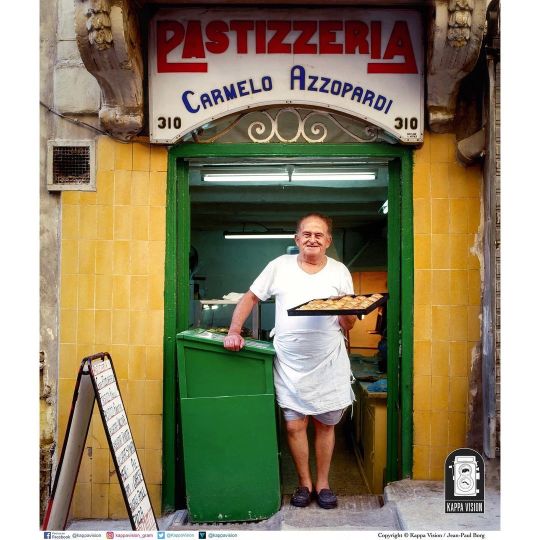
Then and now - a pastizzi maker outside his pastizzeria in #Valletta, #Malta back in the day, and the closed shopfront present today. TAŻ-ŻEWĠ SOLDI Do you remember taż-żewġ soldi? Long shut down, the traditional shop-front of the former Carmelo Azzopardi Pastizzeria is still there in St. Paul Street, Valletta, reminding those who used to stop a grab a couple of Ċisju and Vince's delicious pastizzi of the good old days. Two pennies each… we used to buy half a dozen and by the time we’d reach Castille to catch the bus we’d have already eaten them all. BIL-MALTI Tiftakru lil-taż-żewġ soldi ta' Ċisju u Vince fi Triq San Pawl, il-Belt? Pastizzi taż-żewġ soldi il-wieħed. Konna nixtru nofs tużżana u sakemm konna naslu fuq Kastilja biex naqbdu tal-linja nilħqu nikluhom… (at Valletta, Malta) https://www.instagram.com/p/Cp4BdtlIHez/?igshid=NGJjMDIxMWI=
0 notes
Photo

Then and now - a pastizzi maker outside his pastizzeria in #Valletta, #Malta back in the day, and the closed shopfront present today. TAŻ-ŻEWĠ SOLDI Do you remember taż-żewġ soldi? Long shut down, the traditional shop-front of the former Carmelo Azzopardi Pastizzeria is still there in St. Paul Street, Valletta, reminding those who used to stop a grab a couple of Ċisju and Vince's delicious pastizzi of the good old days. Two pennies each… we used to buy half a dozen and by the time we’d reach Castille to catch the bus we’d have already eaten them all. BIL-MALTI Tiftakru lil-taż-żewġ soldi ta' Ċisju u Vince fi Triq San Pawl, il-Belt? Pastizzi taż-żewġ soldi il-wieħed. Konna nixtru nofs tużżana u sakemm konna naslu fuq Kastilja biex naqbdu tal-linja nilħqu nikluhom… (at Valletta, Malta) https://www.instagram.com/p/Cp4BZmdozXy/?igshid=NGJjMDIxMWI=
0 notes
Photo
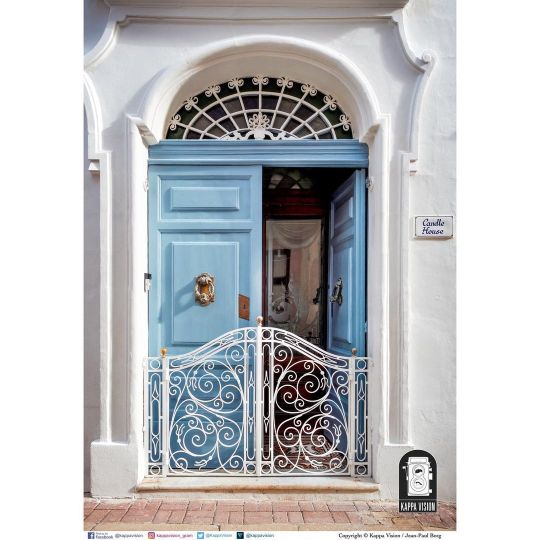
Remember when leaving the front door open was common practice? Often in the shadow of the front door, - the anti-porta is another piece of #Maltese architecture that’s worth highlighting in a bid to preserve this part of #Malta’s heritage. AN ENTRANCE THAT'S A WORK OF ART The doorway of ‘Candle House’ in Ħaż-Żebbuġ opens up to offer passersby a true spectacle for the eyes: from the peacock design on the glass of the anti-porta (or ante-porta), to the work on the wrought iron gate, the floor tiles and even the door knockers. This entrance was done up with great taste, while keeping all those traditional features that scream ‘Malta’ to the onlooker. THE ANTI-PORTA In days gone by, there was a widespread practice to leave the house’s front door open during the day. Elaborate iron and brass gates played a part indicating that this was a private house; the anti-porta did the rest. Simple and functional - and a perfect way to showcase the house’s interior spaces to passers-by! THE IRON GATE - DID YOU KNOW? Back in the day, before the Second World War, the iron gate (called the ‘grada’ in Maltese) in front of a house’s front door had a specific purpose: to keep sheep out! The milk man would milk his goats for you right in front of your house in a tin container. This was done before the last war when a pathogen discovered in milk was causing what was known as ‘deni rqieq’ (Malta Fever). WHAT WAS DENI RQIEQ? Maltese doctor and archaeologist Sir Temi Zammit identified unpasteurized milk as the major source of the pathogen in 1905, and it has since become known as Malta Fever, or deni rqieq locally. (at Ħaz-Zebbug, Malta) https://www.instagram.com/p/Cp1hUNUot4U/?igshid=NGJjMDIxMWI=
0 notes